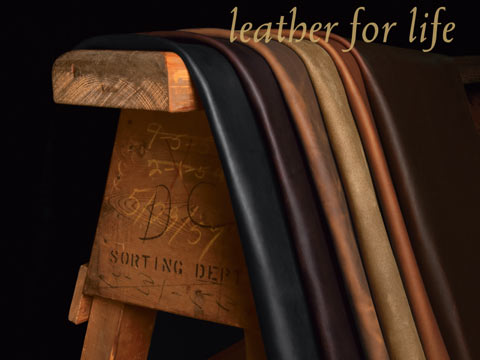Our leather is specially developed Water resistant full grain
oil tanned leather, designed to withstand the harshest weather.
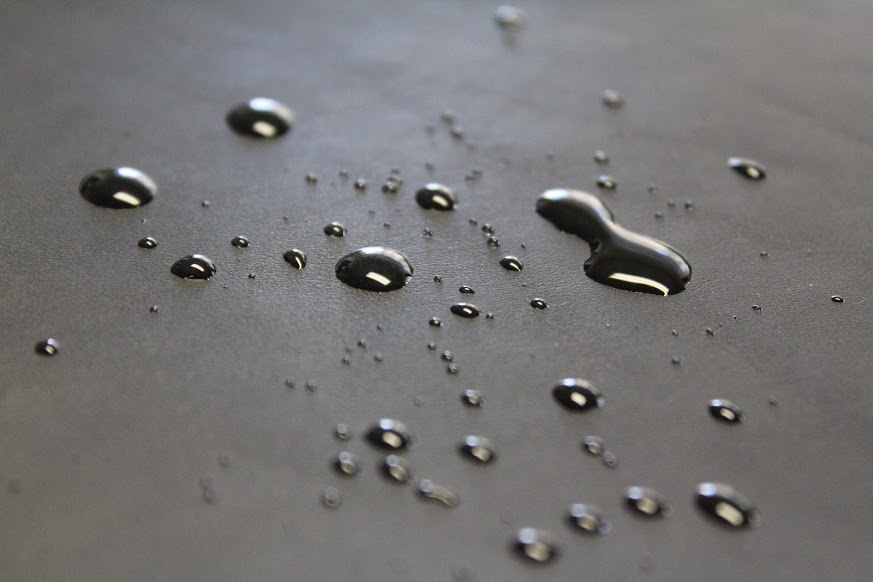
LEATHER CHARACTERISTICS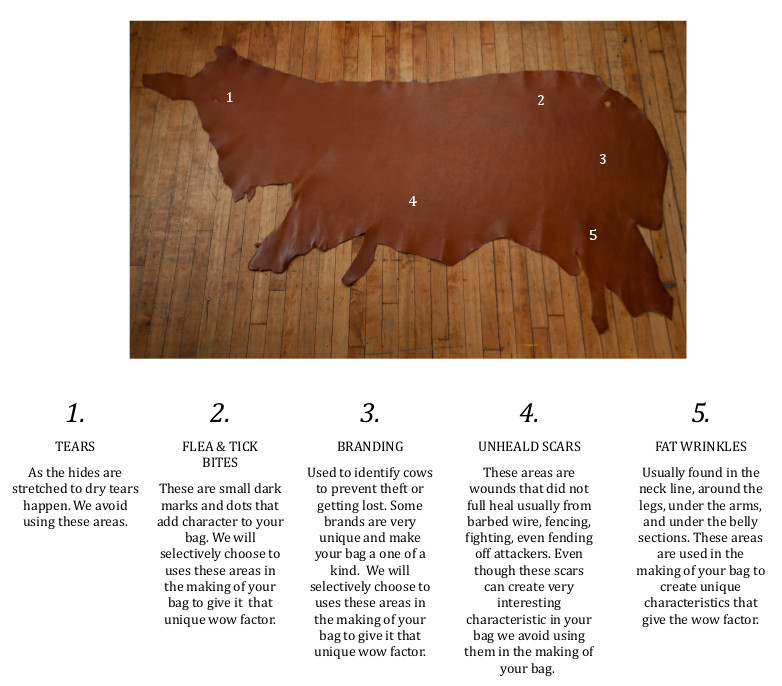

1. Tears - As the hides are stretched to dry tears happen. We avoid using these areas.

2. FLEA & TICK BITES - These are small dark marks and dots that add character to your bag. We will selectively choose to uses these areas in the making of your bag to give it that unique wow factor.

3. BRANDING - Used to identify cows to prevent theft or getting lost. Some brands are very unique and make your bag a one of a kind. We will selectively choose to uses these areas in the making of your bag to give it that unique wow factor.

4. UNHEALED SCARS - These areas are wounds that did not full heal usually from barbed wire, fencing, fighting, even fending off attackers. Even though these scars can create very interesting characteristic in your bag we avoid using them in the making of your bag.

5. FAT WRINKLES - Usually found in the neck line, around the legs, under the arms, and under the belly sections. These areas are used in the making of your bag to create unique characteristics that give the wow factor.
Grades of Leather & The Tanning Process

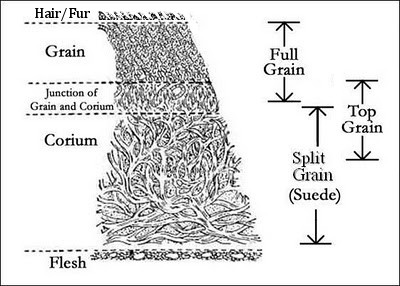
Full Grain Leather (This is the grade used at Copper River Bag Co.)
This is the best leather that you can get from the tanneries. Full Grain leather is the topmost layer of hide. It is called Full Grain as it has all of the toughest grain found in the hide, the strongest and most durable of all the grades of leather. Its toughness is derived from the fact that the grains run vertically, making the bond difficult to split. The natural surface of this leather is smooth and supple, and often reveals the ‘perfect imperfections’ of the hide over its life time, such as unhealed scars, flea and tick bites, brands and . At Copper River Bag Co. we feel these markings add true, unique and lasting character to each and every bag.
Top Grain
The next best grade of leather is Top Grain. Here the hide consists of a mix of vertical and horizontal grain. Still considered very strong and durable leather, the top surface of this grade has been sanded or buffed down to remove any surface imperfections, they remove the true character of the hide as well as weaken the strength of the leather. This grade of leather is used in high end leather bags and is very beautiful but lack the strength and durability we prefer at Copper River Bag Co.
Another derivative of Top Grain is Nubuck, where the surface is sanded in such a way as to create a nap, resembling suede, but inherently stronger than suede.
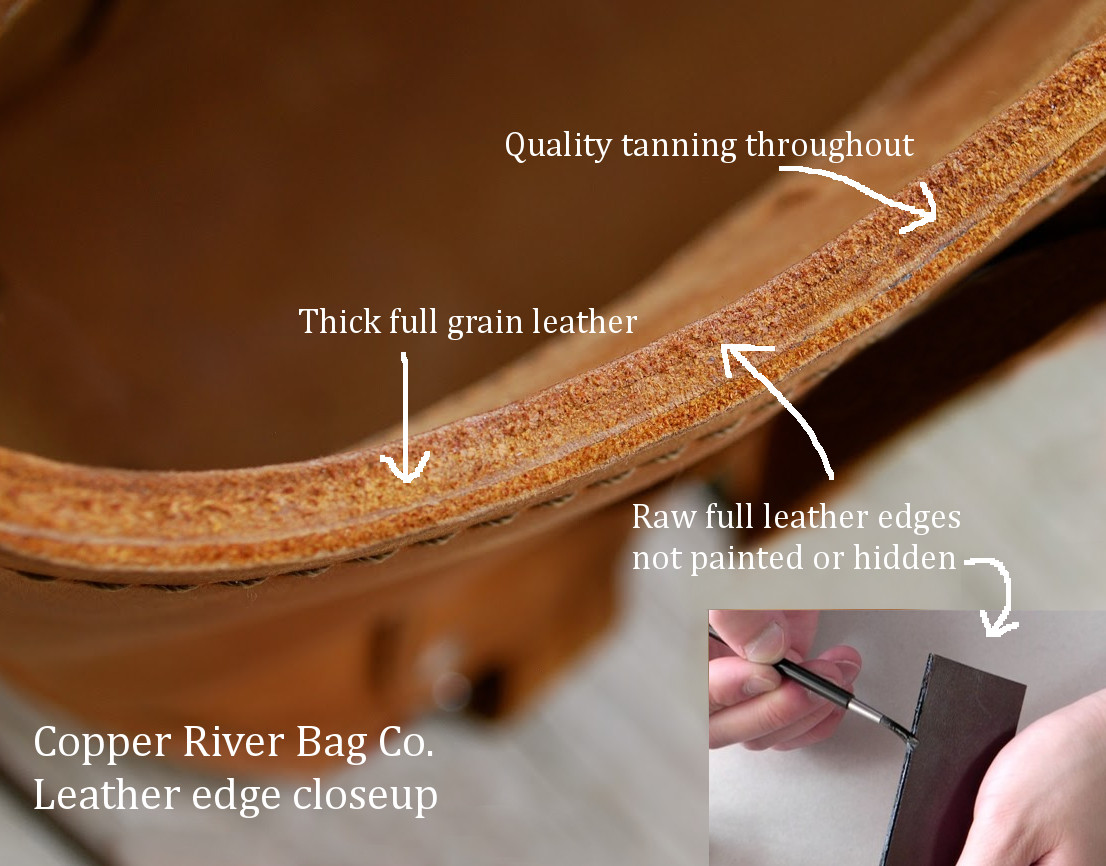
Split Grain
Next down the line, we have Split Grain, so named because it is what remains after the top layers of the hide have been ‘split’ off for production of the other grades. This is less expensive, and not as strong as top grain, as this grade is comprised of horizontal grain that, while tough and sturdy, does not have the tensile strength of full grain or top grain leather. This layer is refinished and treated to improve its durability and aesthetics. Suede is also derived from split grain leather.
Bonded Leather
Taken from the left over parts of the hide, from pieces too small to be of any use, these leather bits are ground up (like in paper making) and chemically bonded together. Talk about not leaving anything to waste! Weak, and sometimes blended with plastic to create partially synthetic leather, some times refereed to as “pleather”. bonded leather lies at the very bottom of the leather grades table and has no business being used as a material for bags.
The Process of creating leather (Tanning)

Tanning is a general term used for the process of converting animal skins to finished leather, preventing the skins from decaying, thus making them soft and flexible. There are two main types of tanning processes used by tanneries around the world.
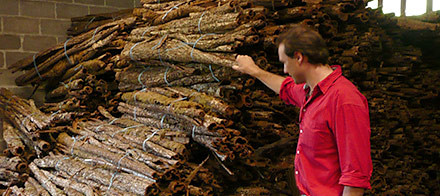
Vegetable Tanning (Veg): a traditional process that uses ingredients made from tree bark to preserve the hide. The result is leather that tends to be more firm. Veg tanned leather is not as stable as chrome tanned leather and will shrink, harden and eventually break down if not continuously sealed and conditioned.
